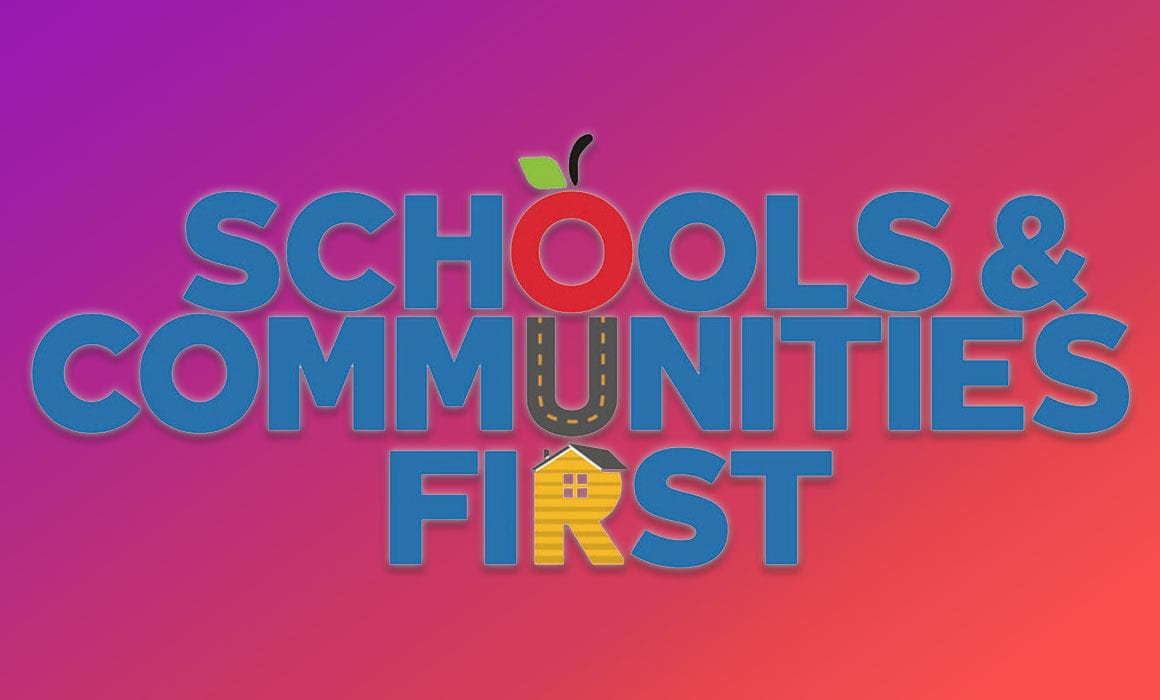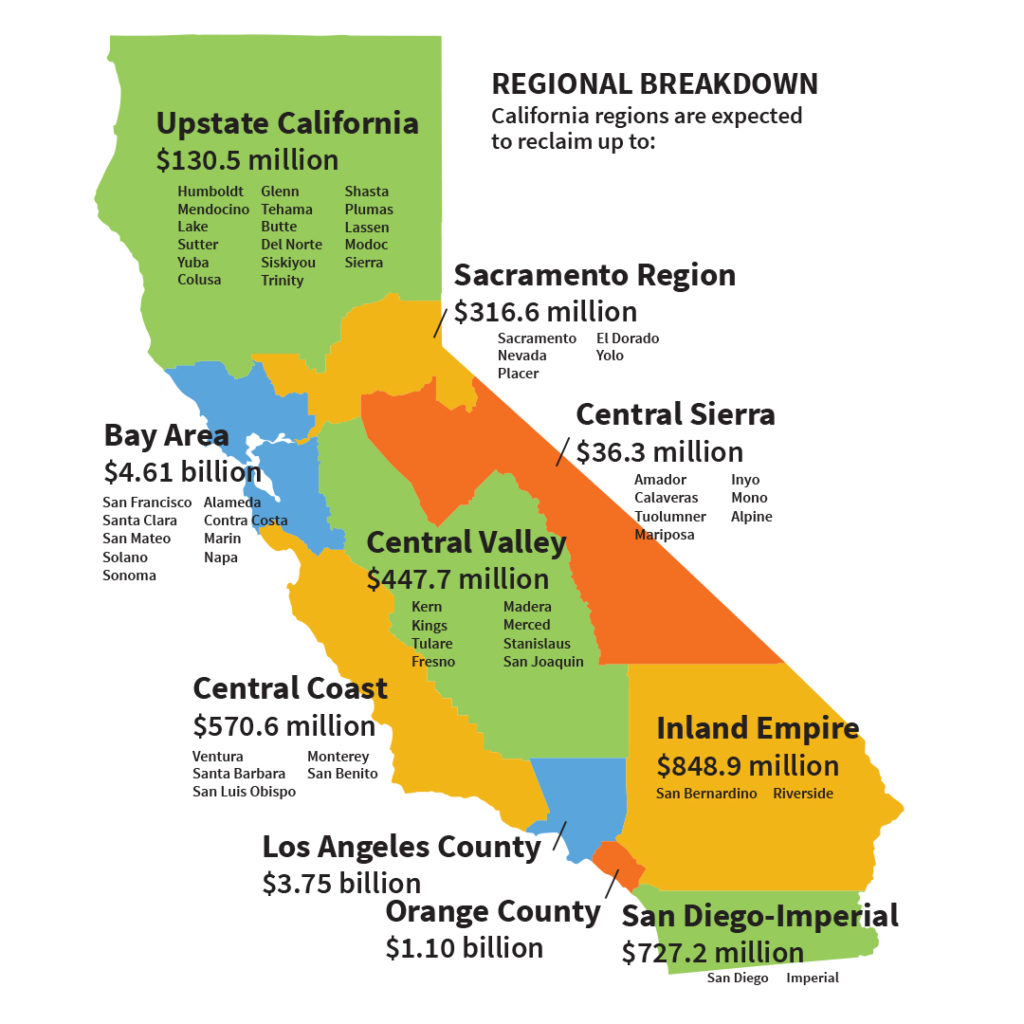
Smaller classes, increased resources, and more of the dedicated educators who support, nurture and inspire all California students are just a glimpse of what’s possible when we put Schools and Communities First!

The vision for fully resourced schools and local services became even clearer earlier this year when a University of Southern California study detailed the $12 billion that will be reclaimed every year through the Schools and Communities First initiative (SCF) and how much will be invested in education and vital services in different regions of the state. The investments would literally change communities with an influx of much-needed resources — with estimates of $3.75 billion annually in Los Angeles County, $447 million in the Central Valley, and a whopping $4.61 billion in the San Francisco Bay Area.
This increase in funding will come from closing corporate property tax loopholes, which have allowed big corporations and wealthy investors to avoid paying their fair share for our schools and public services. For more than 40 years, this scheme has starved public education and local service providers of the resources needed for our students and communities to thrive.
CTA President E. Toby Boyd says SCF is a once-in-a-lifetime opportunity to start to reverse this abysmal situation, which has had disparate impacts on communities across the state.
“This inequity as a result of corporate greed has had a catastrophic impact on our schools and communities, felt disproportionately in communities of color,” Boyd says. “While wealthier school districts can often offset funding cuts with private donations and parcel taxes, the vast majority of schools — especially in our black and brown communities — are unable to prevent significant impacts to students, creating a public education system where the quality of your school often depends on where you live.”
California’s school funding has fallen behind
When California’s Prop. 13 passed in 1978 to protect homeowners from erratic increases in their property tax bills, owners of commercial and industrial properties were able to take advantage of the same protections, and avoided paying their fair share for the public schools and local services that benefit all Californians, resulting in chronic disinvestment and underfunding. Our state now has the most overcrowded classrooms in the U.S. and widespread shortages of counselors, librarians and school nurses.
The Schools and Communities First initiative, on the ballot in November 2020, closes commercial property tax loopholes. This would reclaim $12 billion every year for our public schools, community colleges, and local services like first responders, parks, libraries, public transportation and health clinics.
Billions in additional resources for schools would be a game changer for students and the future of our state, returning California to the time when public education was the top priority and the state led the nation in per-student funding. Today, our state ranks 39th in per-student funding — a disappointing fact for educators who know our students deserve better.
“Every day, I hear stories from teachers who are incredibly frustrated because their students are not getting the support that they need,” says Anita Johnson, president of Mt. Diablo Education Association. “These are students who have experienced trauma and are acting out in the classroom because of it. They are stuck in classrooms with 37 students, and the teacher does not have time to have the one-on-one conversation, make a relationship and help with the trauma. SCF would help lower our class sizes so that we can help these students.”
Help spread the word about why it’s time to put Schools and Communities First. Tell your friends and family about the opportunity to invest in our future, follow the SCF campaign on social media (@Schools1stCA on Twitter), and visit schoolsandcommunitiesfirst.org for more information.
“Let’s work together to pass SCF and usher in a new era for California public education,” Boyd says. “Our students are counting on us!”
Estimated Annual SCF Funding by Region
Los Angeles County: $3.75 billion
San Francisco Bay Area: $4.61 billion
Central Valley: $447.7 million
Inland Empire: $848.9 million
Central Coast: $570.6 million
San Diego/Imperial counties: $727.2 million
Orange County: $1.1 billion
Upstate/Northern California: $130.5 million
Sacramento Area: $316.6 million
Central Sierras: $36.4 million
Source: USC Dornsife Program for Environmental and Regional Equity
What does a well-funded classroom look like to you? And how will SCF help your students?
“The supplies, materials, support, the school structures themselves, our phone systems. Some of our classrooms don’t even have Internet!”
—Jeannie Jentzen, Amador County Teachers Association
“Class sizes are too damn big! Adding one student makes a huge difference. When a student has a disability, one of the first things we do is get them in a smaller class size setting. That’s great when a student really needs it, but it’s good for all students.”
—Michael Gardner, New Haven Teachers Association
“Classrooms where each student has their own computer and doesn’t need to share. Well-funded means the teacher is not buying all the supplies.”
—Naqiba Gregory, West Sacramento Teachers Association
“SCF would allow us to hire some nurses because we have a really high ratio — about 1 school nurse for 3,000 students! Also, with smaller class sizes, we could reach everybody and give them more time.”
—Kim Chevlin, Murrieta Educators Association president
“SCF would provide extra funding for us to have more librarians, counselors and behavior specialists, and help to give kids who are suffering from trauma the tools they need to cope. We really need this.”
—Susan Skala, Chula Vista Educators president
“Wow, I’ve been teaching 25 years and I don’t think I know what a well-funded classroom looks like.”
—Julia Mandeson, Amador County Teachers Association
The Discussion 0 comments Post a Comment